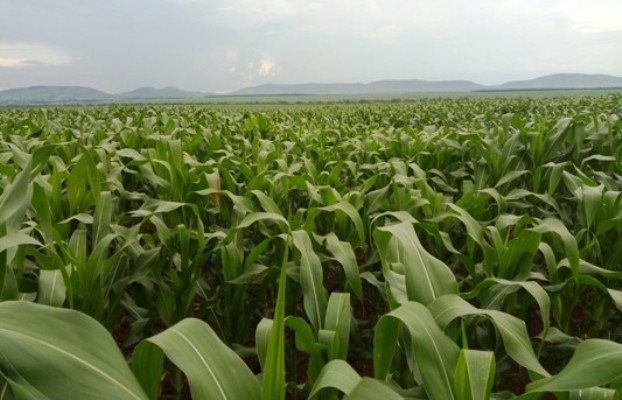Maize remained the main temporary crop cultivated by agricultural households at 69% in season one and 48% in season two.
There was a decline in staple food production across the country in the 2018/2019 Agriculture year, a survey by the Uganda Bureau of Statistics has revealed. The head of the Department of Production and Environment Statistics, Patrick Okello disclosed this while releasing the 2019 annual agricultural survey findings at the UBOS.
According to the survey, maize remained the main temporary crop cultivated by agricultural households at 69% in season one and 48% in season two. Cassava and bananas are cultivated by almost half of the agricultural households.
Maize production was at 2.8 million metric tons down from 3.4 metric tons in 2018 and it was mainly sold unprocessed. This is mainly cultivated in Buganda and Bunyoro regions. There were 167000 metric tons of rice produced in 2019 down from 199,266 metric tons in 2018, representing a 16 % decline. Only 10 percent went into consumption.
Millet production also declined from 268,493 metric tons in 2018 to 73,000 metric tons in 2019. Most of the millet was used for own consumption in the areas of Acholi, Ankole and Lango. Groundnuts production dropped from 253,278 metric tons in 2018 to 133,000 metric tons in 2019, beans dropped from 438,000 metric tons to 727,652 metric tons in the year under review.
Well as sweet potato production also dropped to 1.1 million metric tons up from 1.4 million metric tons. Seventy-seven percent of all the sweet potatoes were consumed by the households involved in the production while cassava dropped to 2.7million metric tons down from 4.3 million metric tons in 2018.
However, the quantity of some crops like banana increased from 6.4 million metric tons in 2018 to 9.4 million metric tons, soya bean increased from 107,624 metric tons to 127,000 while Sim-sim remained at 44,000 metric tons.
UBOS Senior Statistician, Flavia Oumo, said the decreasing production can be explained by area planted and low harvest.
She advises the government to continue providing the farmers with the necessary information to boost their morale and find a market for their produce.
Antonio Querido, the Country Director of the Food and Agriculture Organization appreciated the decrease in subsistence farming, which the report indicates stands at 39% from 63% in 2018. He also highlighted the areas that need improvement in the agricultural sector like mechanization and more agricultural input
UBOS is a statutory body created by an Act of parliament to provide for the development and maintenance of a National Statistical System by ensuring collection, analysis and publication of integrated, relevant, reliable and timely statistical information. It is the source of official statistical information in the country, providing high-quality central statistics information services.
This Annual Agricultural Survey was established in 2017 to provide high-quality statistics on agriculture, core micro and macro indicators within the agricultural sector for easy monitoring and also to inform various development frameworks for batter policy-making and this is done in partnership with the Food and Agricultural Organization (FAO).
-URN






The issue of climate change is a challenge to farmers.